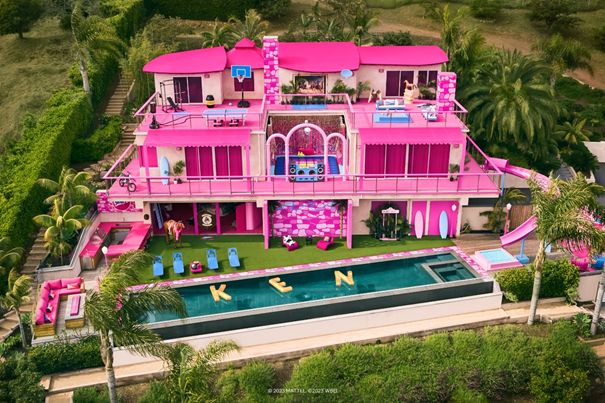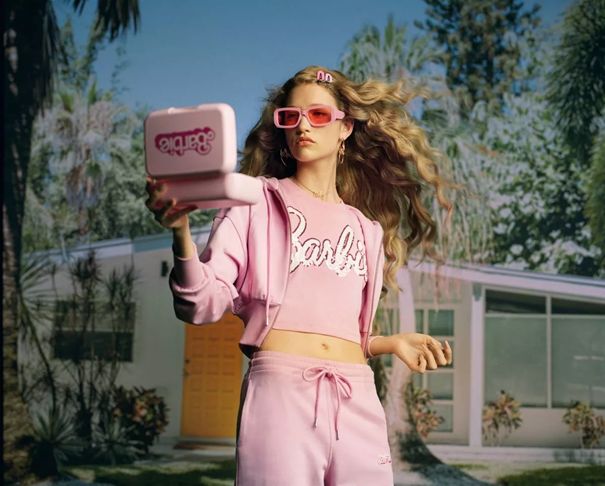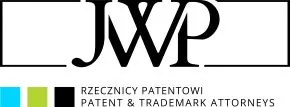In the last few weeks, the colour pink has completely taken over the mainstream, all because of the premiere of Greta Gerwig's new feature film about Barbie. The controversial doll, which evokes so many emotions, both positive and negative, is now the talk of the world. Especially the marketing campaign, carefully planned and impossible to miss, drew a lot of attention. It's scale, and particularly the amount of money spent on it (the estimated number is around 150 million dollars, more than the cost of the film production itself) is quite surprising.
Marketing on such a large scale (the film was advertised globally) was possible thanks to the popularity of Barbie dolls; however, first and foremost, it was the effect of Mattel's multiple licensing agreements with other brands. Barbie was literally everywhere, from pink billboards with the date of the premiere, through pink burgers at Burger King Brazil, a line of clothing created by Zara, to the pink Barbie mansion, a replica of her Malibu Dreamhouse, where you could spend the night.
Source: https://news.airbnb.com/barbies-malibu-dreamhouse-is-back-on-airbnb-but-this-time-kens-hosting/

The Barbiecore trend, a reference to the candyland-like world of Barbie, started in 2022, when clothing companies represented by big stars began promoting the colour pink in all its shades. This fashion was not a coincidence – Barbie was talked about even back then, and the brands preparing their new collections for future seasons included lots of pink, fuchsia and pastels in them. Already in 2022, photos from the set of the film with actors portraying the main characters of Barbie and Ken – Margot Robbie and Ryan Gossling – provoked great interest not only in the production itself, but also in the actors' outfits, which the fashion industry profited from. And, since the day of the premiere, many fashion brands have chosen to enter into a licensing agreement with Mattel (who owns the Barbie trademark) to create collections referencing Barbie. They included Zara, Gap, Forever 21, ALDO, Sinsay, Pepco, or the luxurious fashion house Balmain. Products available only for a limited period of time or in small numbers attracted customers and sold out exceptionally fast.

Source: Zara's Barbie collection inspired by the doll and the film (Photo: Press release)
Beside the fashion brands who referenced the film, new lines were created by cosmetic and even technology brands, such as the pink Barbie console created in collaboration with Xbox. All this was aimed at fuelling the Barbie "obsession" which improved its recognisability among all age groups. The Barbie image has become even more popular thanks to the videos and photos on such well-known platforms as YouTube, Instagram and TikTok, or songs by popular artists, which were included in the official film score. After typing "Barbie" into Google Search, information on the film pops up and the background becomes pink and sparkly.
In order to promote their film, increase Barbie's recognisability and improve their product sales, Mattel – the manufacturer of the toy – has signed around 100 licensing agreements with different brands. All of this was made possible thanks to registering Barbie as a trademark, which protects the brand, its name and slogan. This registration was necessary for Mattel to have exclusive rights to Barbie, thus distinguishing it from its competitors and creating a recognisable, attractive brand that attracts clients. While applying for the registration, it was necessary to specify what goods would be protected by the Barbie trademark. At first, it only appeared on dolls. As their popularity grew, Mattel registered the trademark also in other categories of merchandise, such as clothing, jewellery, vehicles, art supplies etc. The action taken in advance to protect the now iconic trademarks allowed Mattel to grant licences to many companies in order to promote the Barbie film. Companies who signed an agreement with the Barbie trademark owner could profit from the extraordinary hype built around the film, at the same time adding to it through launching their own products with the characteristic logo and consequently advertising the film.
It is worth mentioning that Barbie also has a negative image. The idealized woman that the Barbie doll promotes is referred to in the film itself, but the discussion about how Barbie has influenced popular culture (as well as young girls' self-esteem and perception of their own bodies as deviating from the canon of beauty created by Ruth Handler when she designed a doll with unnatural body proportions) is the reason why so many people talk about Barbie. Even though almost 70 years have passed since the creation of Barbie, it remains in the consciousness of consumers, both young and old. The very film tag line points to the fact that the Barbie film is aimed at those who love the franchise, but also those who hate it. The doll remains popular, despite the negative narrative – some people even learn about Barbie precisely because of this negative marketing, and go to see the film out of curiosity.
Having analysed the above elements of the complex marketing strategy illustrated by the Barbie film, some conclusions may be drawn in order to plan an effective method of protecting and then marketing products of a particular brand.
- The most important question is that of protecting the trademarks owned by the manufacturer, as well as logos the brand is associated with and its advertising slogans. Such protection can be achieved through registering a trademark for particular classes of goods which we want to promote with it. Another necessary step is to determine what region we want to operate in, which allows us to register the trademark in the right countries.
- After that, it is possible to take some steps to strengthen our brand associated with a particular logo and products. A recognisable company, or a company that wants to increase its recognisability, may collaborate with another, granting it a license to use its trademarks. The right wording of such an agreement must be beneficial for both parties and protect their interests.
- It pays to watch trends and use them to create products related to what is, or soon will be, popular. Aside from fitting in with the trends, it is possible to set them, but that requires proper product marketing. It is also necessary to work consistently, as it was the case with advertising of the Barbie film.
- The company's image, as well as the image of its products, is crucial. However, as is apparent from the example of Barbie, it is possible to appeal to different tastes and make our product known. The fact that some people like and others hate Barbie has made her the talk of the town, which has contributed to the huge success of the film and made Mattel products so recognisable.
It should be emphasised that in the domain of intellectual property one should act strategically, because there are certain legal elements, related e.g. to licencing agreements or trademark protection, which are strictly connected to marketing. These business and marketing issues are tied to the question of legal protection, and the best place to devise the legal, quick and efficient implementation of such large marketing campaigns or transactions is a patent law firm.
The content of this article is intended to provide a general guide to the subject matter. Specialist advice should be sought about your specific circumstances.
We operate a free-to-view policy, asking only that you register in order to read all of our content. Please login or register to view the rest of this article.


